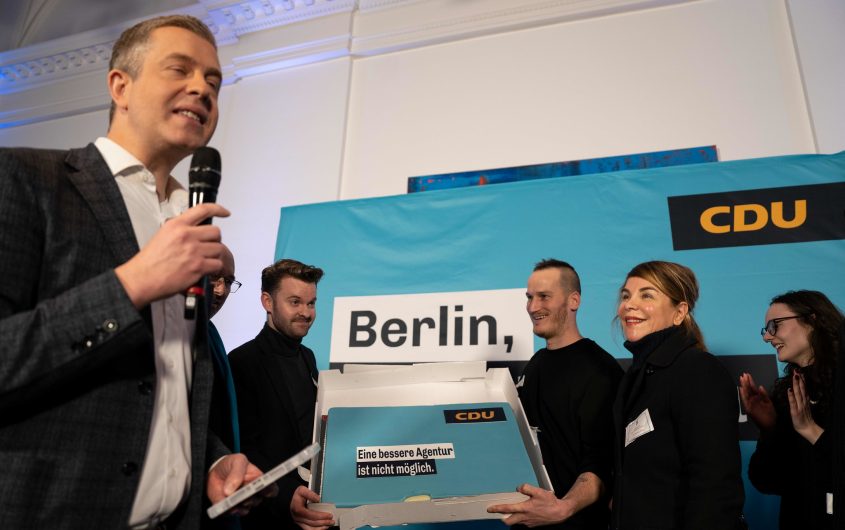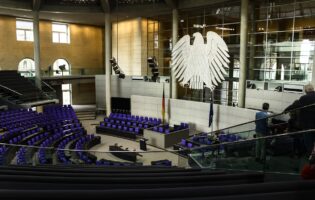
Jugendpresse Deutschland via Flickr
Making Sense of Berlin’s Extraordinary Election

Danny Schindler
Institute for Parliamentary Research
Dr. Danny Schindler is the Director of the Institute for Parliamentary Research (IParl), which is an institution of the Foundation for Science and Democracy (Stiftung Wissenschaft und Demokratie). He also works as lecturer at the Martin-Luther-University Halle-Wittenberg. His research focuses on parliaments and parties in democratic as well as non-democratic countries. Currently, he examines candidate recruitment in Germany, decision-making within parliamentary party groups in a comparative perspective, and the empowerment of opposition forces in African polities.
A glorious winner, many losers, and the politics of coalition building
On November 16, 2022, the Constitutional Court of the city-state Berlin judged that the 2021 state-level parliamentary election had to be rerun because of serious electoral irregularities due to various organizational failures. As a consequence, voters in Berlin had to go to the polls once more on February 12, 2023. Curiously enough, the vote had to be repeated with the same candidates since it was an extraordinary election. For the same reason, it did not start a new electoral period.
Likely affected by the need to repeat the election, representative pre-election surveys pointed to widespread dissatisfaction with all parties—regardless of whether they were part of the incumbent government (Social Democrats (SPD), Greens, Left) or the parliamentary opposition (Christian Democrats (CDU), Free Democrats/Liberals (FDP), Alternative for Germany (AfD)). Moreover, and partly as a result, none of the various conceivable coalition models met with the respondents’ approval. Most accepted, even if on a low level, were an alliance of the CDU, the SPD, and the FDP (supported by 36 percent) or a continuation of the old coalition (supported by 32 percent).
As usual for elections in Germany’s city-states, regional politics mattered a lot more for the vote than politics at the federal level. Almost three-quarters of citizens agreed that their choice at the ballot box is first and foremost determined by what happened at the city-state level. Accordingly, the electoral agenda was heavily dominated by regional topics. Berlin’s population considered the housing market and rising rents as well as the city’s traffic situation by far to be the most pressing problems. Those issues were addressed by some moderately polarizing election campaigns. The Greens, for instance, tried to attract voters by plans to halve the number of parking spaces and to ban combustion engines from the city center, while the CDU put up posters with the slogan “Berlin is for all, including car drivers.”
The election in February resulted in a significant victory for the Christian Democrats and their frontrunner Kai Wegener. The party gained 28.2 percent of the votes which meant 10 percentage points more than two years before (2021: 18 percent). Furthermore, for the first time since the turn of the millennium, it finished first among Berlin voters. The incumbent parties slightly lost support: Their vote shares decreased from 21.4 to 18.4 percent (SPD), from 18.9 to 18.4 percent (Greens), and from 14.1 to 12.2 percent (Left party). While the AfD marginally gained more support (9.1 percent compared to 8 percent in 2021), the Liberals ended up as tragic losers. Even though they had not been involved in the failures that led to the repeated election, the party dropped out of parliament because of a vote share below the five percent hurdle (4.6 compared to 7.1 percent in 2021).
Importantly, the Social Democrats and their leading candidate and incumbent head of government, Franziska Giffey, scored second—ahead of the Greens by a margin of 53 (!) votes. For that reason, the SPD immediately claimed to spearhead a potential coalition with its current partners. However, several rounds of exploratory talks were subsequently held to sound out possible majority coalitions (in German: Sondierungsgespräche) between the CDU and the SPD; between the CDU and the Greens; and between the SPD, the Greens, and the Left. From the angle of power politics, relaunching the old red-green-red coalition seemed preferable for all its partners even though all had lost: the SPD would be able to retain the post of the Governing Mayor (the prime minister in the city-states) due to its slim lead; the Left party could preserve its government participation, and the Greens could maintain a left-leaning alliance compared to a coalition with the conservative CDU.
The SPD’s chances for the next state-level elections in 2026 were considered better in case of a coalition with the CDU; although the party had to sacrifice the post of the Governing Mayor, such an alliance would offer more policy options and enable more profile-building.
Yet, the Sondierungsgespräche resulted in the SPD’s surprising renunciation. Its negotiators, the narrower executive board (geschäftsführender Vorstand), opted for an alliance with the CDU for several reasons: in their view, the Greens had been hardly willing to compromise (compared to the CDU) in terms of policy. They even questioned the constitutionally guaranteed authority of Berlin’s head of government to determine the general policy guidelines (Richtlinienkompetenz, article 58). The Left party had been regarded as a more reliable partner but also as too troubled with internal squabbles fuelled by its polarizing former figurehead Sarah Wagenknecht. Consequently, there were massive doubts as to the stability of a renewed three-party alliance. Moreover, the SPD’s chances for the next state-level elections in 2026 were considered better in case of a coalition with the CDU; although the party had to sacrifice the post of the Governing Mayor, such an alliance would offer more policy options and enable more profile-building. From a broader perspective, one might add that a new edition of the old (losing) coalition would have meant ignoring the wind of change sparked by the voters and, in particular, sidelining the clear winner (CDU).
Tactically, the SPD benefited from first-mover advantage since it announced its preference for allying with the CDU while at the same time, the other parties were still talking and thinking about their options. Still, it was not a choice without risk since the CDU is rather unpopular among the party’s ideologically oriented mid-level elite. While the CDU leadership unanimously recommended coalition negotiations with the SPD, such a step was approved only by a two-thirds majority (25:12) among the latter’s wider executive board (Vorstand). More tellingly, a conference of delegates in Giffey’s own party district (Neukölln) voted against coalition negotiations with the CDU. Anticipating such discontent among the party’s functionaries, the leadership chose another strategy from the arsenal of power politics: instead of deciding on the negotiated coalition agreement at a delegate conference (like the CDU), it opted for giving its entire membership a final say, which can be deemed as a wise step since the rank-and-file is usually more pragmatically motivated. Besides, it is hard to oppose such a move obviously in favor of intra-party democracy. The leaders’ strategy to rely on the membership to enter an unpopular coalition with the CDU had paid off before: In 2013 and 2017, 76 percent and 66 percent of the party members agreed with the choice of coalition, which was a clear sign given the high turnout of roughly 78 percent. To be valid, at least one-fifth of the almost 19,000 SPD members in Berlin must participate in the intra-party ballot, which will be organized as a postal vote.
Similar to coalition talks at the federal level, the current negotiations are guided by two principles: in terms of specialization, thirteen working groups are set up for different policy areas (for instance, economy, traffic, health, etc.) to determine common goals and ways to reach them. In terms of hierarchy, final decisions about contentious issues and conflicts between policy fields are taken by the party’s top-level politicians. As said above, the SPD also will involve its membership once the coalition agreement is negotiated. Typically, such membership ballots in Germany do not correspond to a quiet majority vote. In Berlin, the Social Democrats will hold two in-person membership conferences and four policy-related online conferences prior to the vote. At those meetings, the negotiating actors must explain their conduct and results while the audience can pose questions and express their views. Hence, the democratic force of accountability takes effect, and there is room for reasonable discussion and fair opinion formation. In case the SPD finally rejects the planned coalition (this is almost unthinkable for the Christian Democrats), there remain only two—equally challenging—options: while an alliance between the conservative CDU and the left-leaning Greens would certainly need the approval of the latter’s membership, a new attempt to rebuild the red-green-red coalition might require the replacement of the SPD’s current leadership.









